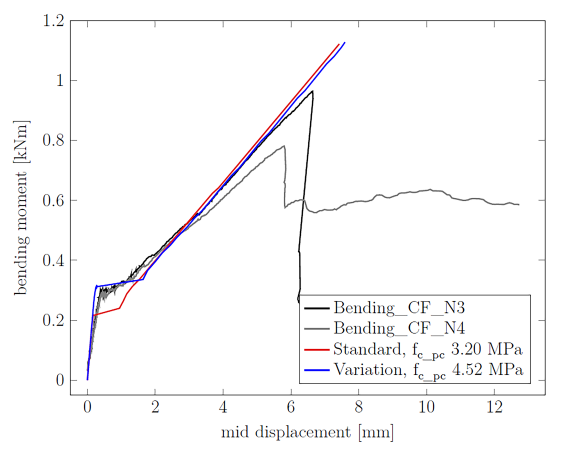Computational Analysis of Shell Structures Using Knitted Formwork and Reinforcement
Author: Pius Cottier
Language: English
Abstract
The combination of knitted textile reinforcement and formwork enables the construction of shells in nearly any desired shape, while being more material-, time- and cost-effective than conventional methods. However, limited knowledge of the load-bearing behaviour of knitted reinforcement along with its brittleness are still hindering its use in a wider application area. Within this thesis, several simulation series were conducted to provide a computational basis for further research and design processes.
An experimental campaign on knitted reinforcement was simulated to validate the non-linear input parameters and the constitutive material laws. The results showed good agreement with the experiments. One parameter which had to be adjusted was the tensile strength of the pure concrete layers. It was found that the mean uniaxial tensile strength was more appropriate as input parameter than the lower 5%-quantile. An example of the simulations can be seen in Figure 1. It shows the bending simulations for the carbon fibre inlays, with varying input parameters for the tensile strength of the pure concrete layers.
These input parameters were applied to nine large thin shell structures differing in the degree of double curvature. By comparing their non-linear load transfer with the linear-elastic one, large alterations were found which would lead to an inefficient design if based on the latter. The alterations occurred especially in the longitudinal membrane forces, the longitudinal and lateral bending moments as well as the twisting moments. An example of these differences at the non-linear ultimate load for a highly anticlastic shell is shown in Figure 2.
A further step towards more realistic simulations by adding second-order theory failed due to convergence problems. The used FEM-programme SOFiSTiK seems not capable of dealing with the complexity of simultaneously calculating a new stiffness matrix after each successful iteration, while including the additional non-linear forces. The ultimate loads for curved shells with increasing double curvature showed a relatively linear increase, while the respective displacement decreased exponentially.
Concluding the workflow, certain occurrences could not be explained within SOFiSTiK. Particularly noteworthy is a discrepancy between the implemented stress-strain relationship with the resulting stress state in some synclastic double curved shells. Nevertheless, SOFiSTiK is found to be a good compromise between successfully performing relative complex calculations, while still being user-friendly and can therefore be recommended for further use within this field of research.

